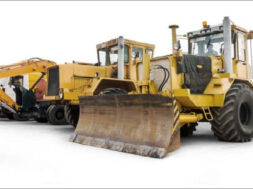Use of polymer modified cement coatings is a better solution for protection of concrete structures in potable or wastewater treatment environments. The high level of polymer modification provides excellent chemical resistance and flexibility, while the cement content makes it ‘breathable’Reinforced concrete structures in potable and wastewater treatment facilities may be waterproofed with a variety of protection systems. Waterproofing, erosion protection and, to some extent, improvement of chemical resistance are the main reasons for the application of waterproofing/protective systems in potable water treatment facilities. In wastewater treatment the waterproofing is equally important, but the chemical protection of the reinforced concrete structure is essential in areas where concrete is exposed to sulphuric acid which is microbiologically formed from hydrogen sulphide. The hydrogen sulphide created by anaerobic oxidation of sulphates present in wastewater escapes to the air above the wastewater and is then oxidised, forming sulphuric acid on the surface of the concrete. It is the acid formation which causes severe concrete deterioration. A typical example of concrete deterioration in the equalisation tank of an industrial wastewater treatment facility is shown in Fig. 1. Similar deterioration is found in pumping (lift) stations, manholes, sewers and digesters. Traditionally, polymer-based coatings such as epoxy, vinyl esters and other polymers have been used for waterproofing and protection of both potable water and wastewater treatment facilities. While polymers exhibit a very good chemical resistance, they have a number of disadvantages when applied to concrete in continuous exposure to water, often resulting in failures through de-bonding from the concrete substrate. There are a number of reasons why polymer coatings applied to concrete will fail, but the main problem is the presence of moisture within concrete and on its surface. Even when using surface moisture compatible polymer coatings, such as special epoxy, the water vapour impermeability (the lack of breathability) results in their de-bonding from the concrete. Similarly, if water gets at the concrete/polymer coating interface from the outside (e.g. from the surrounding ground water), the capillary pressures created at that interface will cause de-bonding. A typical example of epoxy failure caused by water present at the polymer coating/concrete interface is shown in Fig. 2. Water can also penetrate from the inside (the storage side) into the concrete/polymer coating interface through pin-holes and micro-cracks.
It is often wrongly assumed that the polymer coating de-bonding is caused by water vapour pressure, the actual vapour pressures are too small to cause the bond failure and so it is the capillary pressure of the water at the interface that causes the de-bonding. To avoid de-boning due to the presence of moisture presence, the concrete must be completely dry to a depth of 2-3 cm. When applying the polymer coatings in closed tanks or in new construction this is difficult to achieve and expensive to achieve and requires several days of forced drying to assure safe application of polymer coatings.
Obtaining continuity of the polymer coating is also difficult especially in repair and restoration projects. A smooth and even surface is required for a pin-hole and micro-crack free substrate, so the application of a thin cement layer is often needed to prepare an eroded or chemically damaged surface. Failing to provide the coating continuity, results in water penetration to the coating/concrete interface and subsequent de-bonding. A typical example of epoxy coating failure one year after application due to pin-holes and micro-cracks is shown in Fig. 3.
Another better solution for protection of concrete structures in potable or wastewater treatment environments is to use polymer modified cement coatings. Gemite Products Inc. offers two types of protective coating: Cem-Kote Flex ST and Cem-Kote Flex CR. The high level of polymer modification provides excellent chemical resistance and flexibility, while the cement content makes these coating ‘breathable’ allowing the water vapour to evaporate and the release of possible capillary pressures at the interface, thus eliminating the de-bonding problems of the polymer-based coatings/membranes. Polymer modified cement materials can be applied to completely water saturated concrete and even when there is moisture present on the surface. Cem-Kote Flex materials are used in waterproofing and protection of reinforced concrete in potable water and to some extent (in open structures) wastewater treatment facilities, in repair and new construction. Portland cement based Cem-Kote Flex ST is used in potable water or wastewater facilities with no, or minimum, concentrations of hydrogen sulphide. In combination with additional reinforcement it is also suitable in waterproofing of concrete structures exposed to ozone treatment. Cem-Kote Flex CR is used in applications where higher concentrations of hydrogen sulphide are expected, e.g. roofed clarifiers, digesters, pumping stations, sewers and manholes. Cem-Kote Flex CR is a polymer modified aluminate cement composition, where the synergy between the polymer modifier and the cement provides excellent resistance to microbiologically induced corrosion (MIC). The chemical resistance of Cem-Kote Flex CR to microbiologically formed sulfuric acid has been extensively tested in the test chamber of the Moscow Vodokanal, Russia, which has high hydrogen sulphide environment, 24 to 40 ppm and the pH of the concrete surface less than 1. The results of the testing proved the excellent resistance of Cem-Kote Flex CR in this environment.
Both Cem-Kote Flex ST and CR are easy to apply, cleaning of tools and equipment is simple by washing with water and they exhibit none of the health hazards presented by the polymer coating systems. Cem-Kote Flex ST and CR are two component materials, consisting of dry bagged powders and a liquid polymer additive supplied in a plastic container. The two components are mixed on site using a conventional electric paddle mixer or mortar mixer and applied in two coats by brushing or spraying to a total thickness of 1.6 to 2 mm. In new construction, a high pressure wash is sufficient to clean the existing concrete. The smaller “bug-holes” are coated over with Cem-Kote Flex ST/CR, the larger ones are pre-filled with the same material mixed with less of the liquid component to obtain a trowel consistency. The drying shrinkage cracks are treated with Reinforcing Fabric NW, which provides waterproofing even if the crack bridging capacity of flexible Cem-Kote Flex ST/CR is exceeded. Several types of equipment, including peristaltic and positive displacement pumps may be used for the spraying of Cem-Kote Flex ST/CR. This allows a highly efficient, easy and fast application.Table 1: Comparison of polymer modified cement coatings, Cem-Kote Flex ST and CR and polymer coatings
Performance Characteristic
Cem-Kote Flex ST/CR
Polymer Coatings
Sensitivity to water saturated surface
Not sensitive
Sensitive
Concrete substrate drying prior to application
Not required
Required
Crack bridging (flexibility)
Excellent
Very limited
Resistance to ozone treatment – potable water
Excellent (when reinforced)
Limited
Breath-ability
Breathable
Non-breathable
De-bonding due to interface capillary pressure
Will not de-bond
Will de-bond
De-bonding due to negative side pressure
Will not de-bond
Will de-bond
Sensitivity to pin-holes and micro-cracks
In-sensitive
Highly sensitive
Sensitivity to variation in mixing
Not sensitive
Highly sensitive
Ease of application
Easy to apply
Difficult to apply
Clean-ability of tools
Very easy
Very difficult
Resistance to sulphuric acid formed from H2S
Excellent (Flex CR)
Excellent
Cost (in place)
Low
High
When there are very rough surfaces, the deteriorated concrete is removed and the surface cleaned using high pressure water. Micro-silica modified Portland cement materials, such as Fibre-Patch OV for hand application or Spray-Con WA ST for wet shotcrete process application, are applied in thicknesses varying from 1 to 10 cm, depending on the degree of deterioration. A levelling layer is required to repair the surface and provide a smooth surface to minimise ‘pin-holes’ in the application of Cem-Kote Flex CR. Fibre reinforced Fibre-Patch OV and Spray-Con WS ST materials are insensitive to the presence of moisture in the concrete substrate and the fibre reinforcement provides a high toughness and some degree of substrate crack bridging.
Wastewater facilities, manholes, and sewer systems also contain metal parts that require corrosion protection. The corrosion protective polymer barrier systems are very difficult to apply in the repair of these structures, since they require very clean (white metal) and dry surfaces to function. The barrier systems are also very sensitive to pin-holes, where the rate of corrosion is very high. Gemite has been successfully using a cement based corrosion protective coating, Fibre-Prime, which does not require the ‘white metal’ surface and loose rust removal is sufficient. It is completely insensitive even to surface moisture present on the metal parts. For additional protection to microbiologically caused corrosion by sulphuric acid, Cem-Kote Flex CR may be applied over Fibre Prime. The advantages of Fibre-Prime are also very important in the corrosion protection of the exposed reinforcing steel in restoration of reinforced concrete structures.
Fig. 4 shows the repair of a clarifier in Slobozia, Romania. The original de-bonded concrete layer on the base slab was removed and replaced with a new layer of self compacting concrete. The surface was cleaned with high pressure water and two coats of Cem-Kote Flex ST spray applied as shown in Fig. 5. The deteriorated concrete on concrete on walls of the clarifier was removed and repaired with Spray-Con WS ST repair mortar, and coated with two coats of spray applied Cem-Kote Flex ST. The exposed reinforcing steel was treated with Fibre Prime cementitious rustproofing and cracks were treated with Cem-Kote Flex ST with embedded Reinforcing Fabric NW as shown in Fig. 6.
Fig. 7 shows an early project in Bedford, Nova Scotia. The severely cracked concrete tank was first coated with 12 mm layer of wet shotcrete applied, fibre reinforced mortar Gem-Crete HDO and coated with two coats of Cem-Kote Flex ST. The project was carried out in 1993 and an investigation in 2010 showed that the repair and crack sealing is functioning very well. An example of Cem-Kote Flex CR used in the restoration and protection of a wastewater treatment facility in Ottawa, Ontario is shown in Fig. 8. Fig. 9 shows an application of wet process shotcrete, Spray-Con WS ST, in the repair of a deteriorated concrete tank in Truro, Nova Scotia. Two coats of Cem-Kote Flex CR were applied to provide waterproofing and chemical protection.
Extensive field comparisons of Cem-Kote Flex ST and Cem-Kote Flex CR projects in Canada have shown that these materials are not only free of de-bonding problems, but also considerably less expensive, with ‘in place costs’ approximately 3-4 times less, than polymer coatings. Table 1 summarises performance characteristics of Cem-Kote Flex ST and CR vs. polymer coatings in potable and wastewater treatment applications.
Cookie Consent
We use cookies to personalize your experience. By continuing to visit this website you agree to our Terms & Conditions, Privacy Policy and Cookie Policy.









